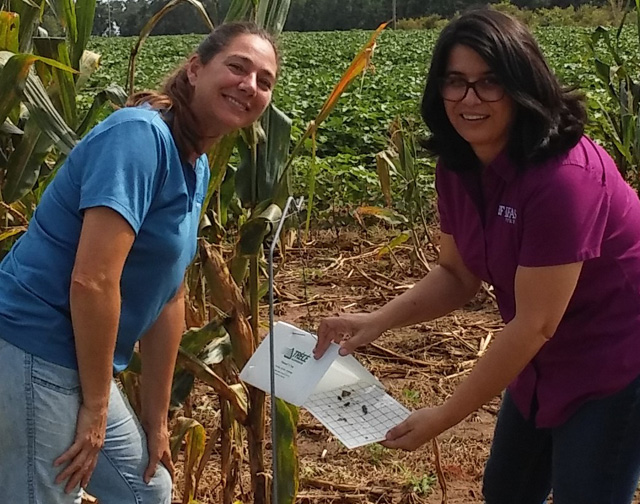Silvana Paula-Moraes began working in the fall of 2016 at the UF/IFAS West Florida Research and Education Center (WFREC) based in Jay, Florida. Originally from Brazil, Dr. Moraes completed her PhD in Nebraska. Her research has been dedicated to address several aspects of Integrated Pest Management (IPM) and Insect Resistance Management (IRM) for corn, cotton, and soybean.
Her appointment at WFREC is 70% research and 30% teaching, and will address several components of IPM, including the ecology of insect pests associated with field crops in Florida, insect movement, host utilization, and differential exposure to Bt toxins in Bt crops. This year, Dr. Moraes and Latisa Ledbetter-Kish, her field technician, have been working with Extension agents to monitor insect populations across three Panhandle counties (Escambia, Santa Rosa, and Jackson) in corn, peanuts, and cotton. UF/IFAS Extension Agent Libbie Johnson is coordinating the effort with growers in the western counties, and Ethan Carter with growers in Jackson County. Starting out, her first objective is to document the pests prevalent in the Florida Panhandle.
Her work includes the use of pheromone traps in both irrigated and dryland peanut and cotton fields. Pheromone traps consist of a plastic popup A-frame structure, with a sticky trap bottom liner placed inside. On the liner a small lure infused with pheromones is used to attract adult moths to the trap from a distance spanning roughly 60 meters.
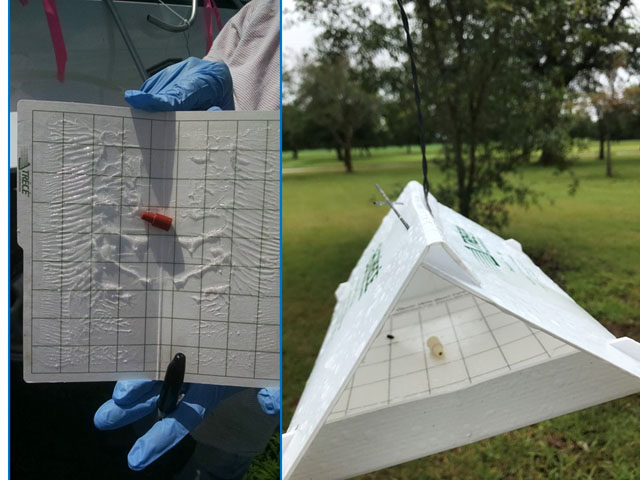
Sticky sheet known as a liner on the bottom of trap with a lure placed in the middle (left), complete trap showing a liner and lure inside (right).
There are roughly eight fields across each county where pheromone traps are used to collect the adult moths of fall armyworms, soybean loopers, and corn earworms. Each field has a total of six traps, which are spaced equidistant and grouped in sets of three on two sides of a field.
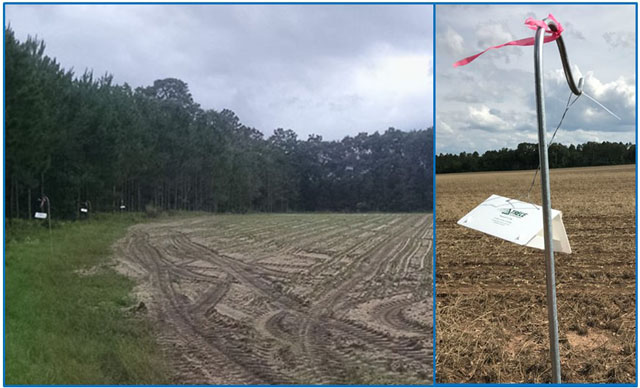
Example of pheromone traps grouped in a peanut field (left), along with a close up of a trap (right).
Every two weeks, the liners are removed from the traps, dated and bagged, so that the number of moths from the two week span can be recorded in the lab for each trap location. The lure itself is replaced every four weeks.
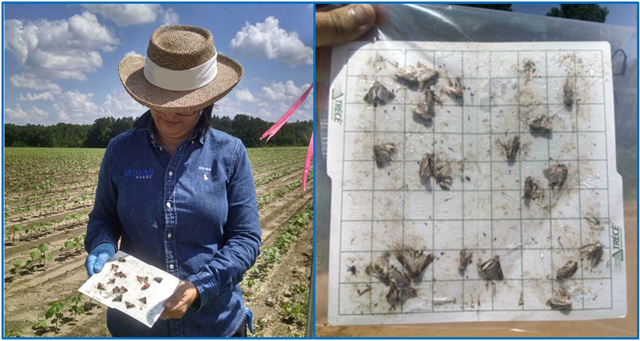
Dr. Moraes holding a newly collected liner (left), example of a bagged liner which is taken to her lab for processing, so that the number of moths can be recorded.
Aside from pheromone traps, she is also collecting insects from the fields through the use of active sampling using a sweep net, beat cloth, and plant inspection. Samples are collected several times throughout the growing season, while the crops are at various physiological stages.
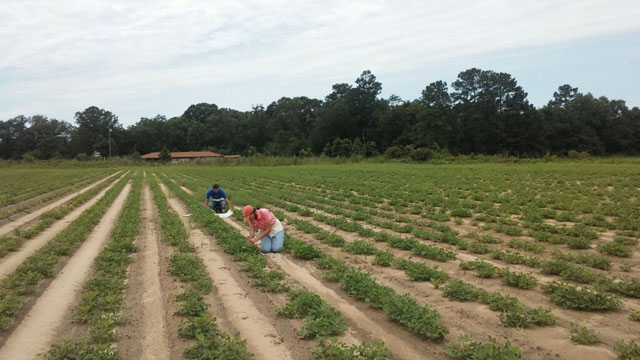
Ethan and Latisa sampled a peanut field during the the 2017 growing season using a beat cloth and plant inspection.
Overtime, this work will provide Florida-specific data regarding the frequency of moth flights, insect life cycle, threshold levels, and will help determine any pest resistance issues- whether it be from insecticide sprays or Bt crops.
- Provisional Nitrogen Fertilization Recommendation for Florida Cotton for the 2025 Season - June 20, 2025
- NFREC-Quincy Row Crop Field Day – July 21 - June 20, 2025
- NFREC-Marianna Peanut Field Day – August 14 - June 20, 2025

